_and_Paula_Golden_(President_of_Broadcom_Foundation).jpeg?table=block&id=31ca71a0-f277-4e08-80ee-66e31223178f)
SSI Meets with Visionary Tech Leaders - Raspberry Pi Foundation CEO and Broadcom Foundation President
September 20, 2023
Written by Michelle Park (SSI), in collaboration with Dana Orsini (public relations manager for Broadcom Foundation). This article is not sponsored by the Broadcom Foundation, Raspberry Pi Foundation, or any of their products.
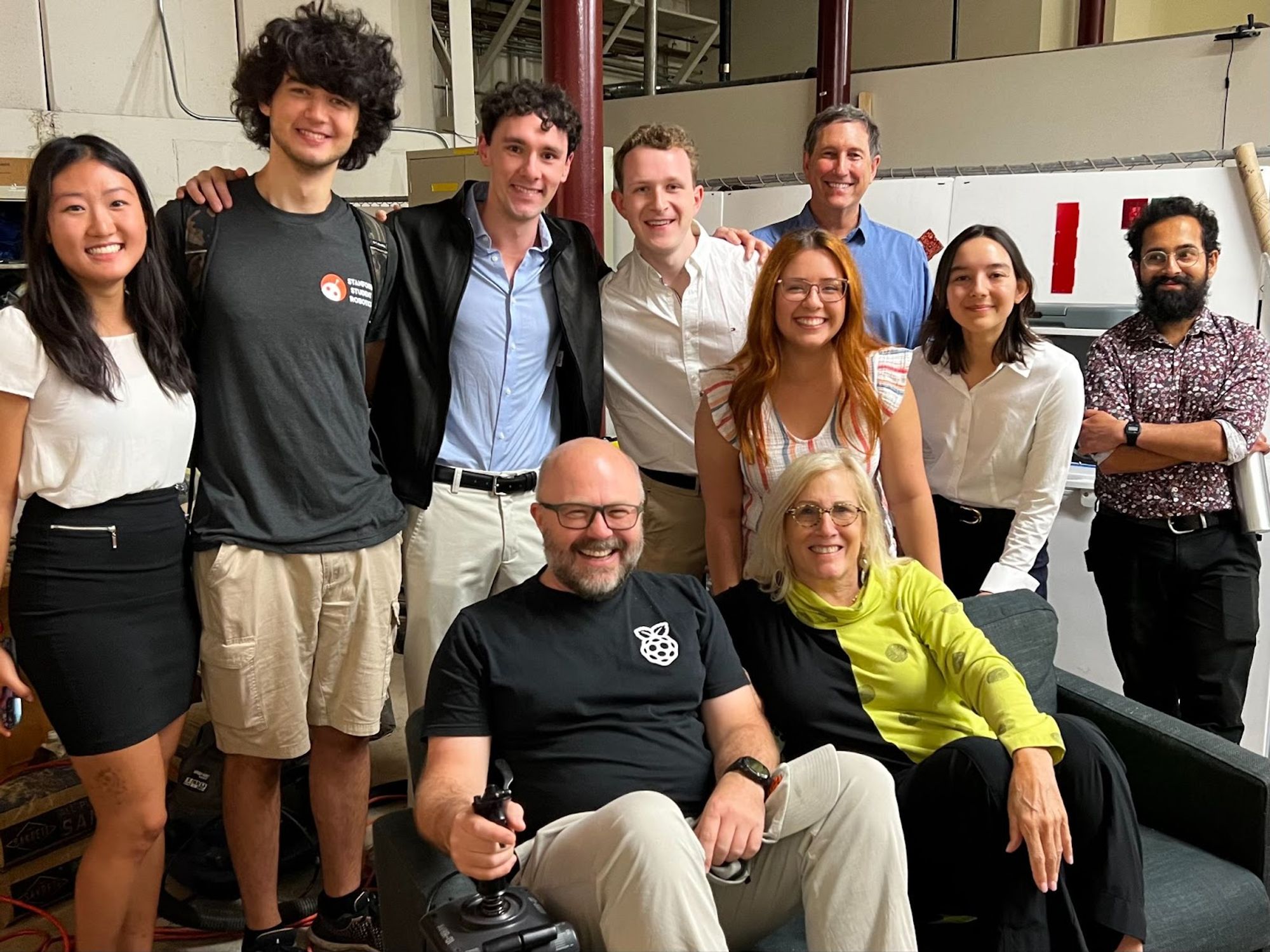
This summer, Stanford University’s Student Space Initiative (SSI) welcomed Philip Colligan (CEO of Raspberry Pi Foundation) and Paula Golden (President of Broadcom Foundation) to share updates on Sapling Magnifica, a miniature cube-shaped satellite (CubeSAT) that aims to launch later this year. For the upcoming mission, the students will mount a small single-board computer called a Raspberry Pi inside the satellite, which will take and send photos from space. For future satellites, the Pi will include a star-tracker, which will determine the satellite’s orientation by analyzing where it is relative to surrounding stars.
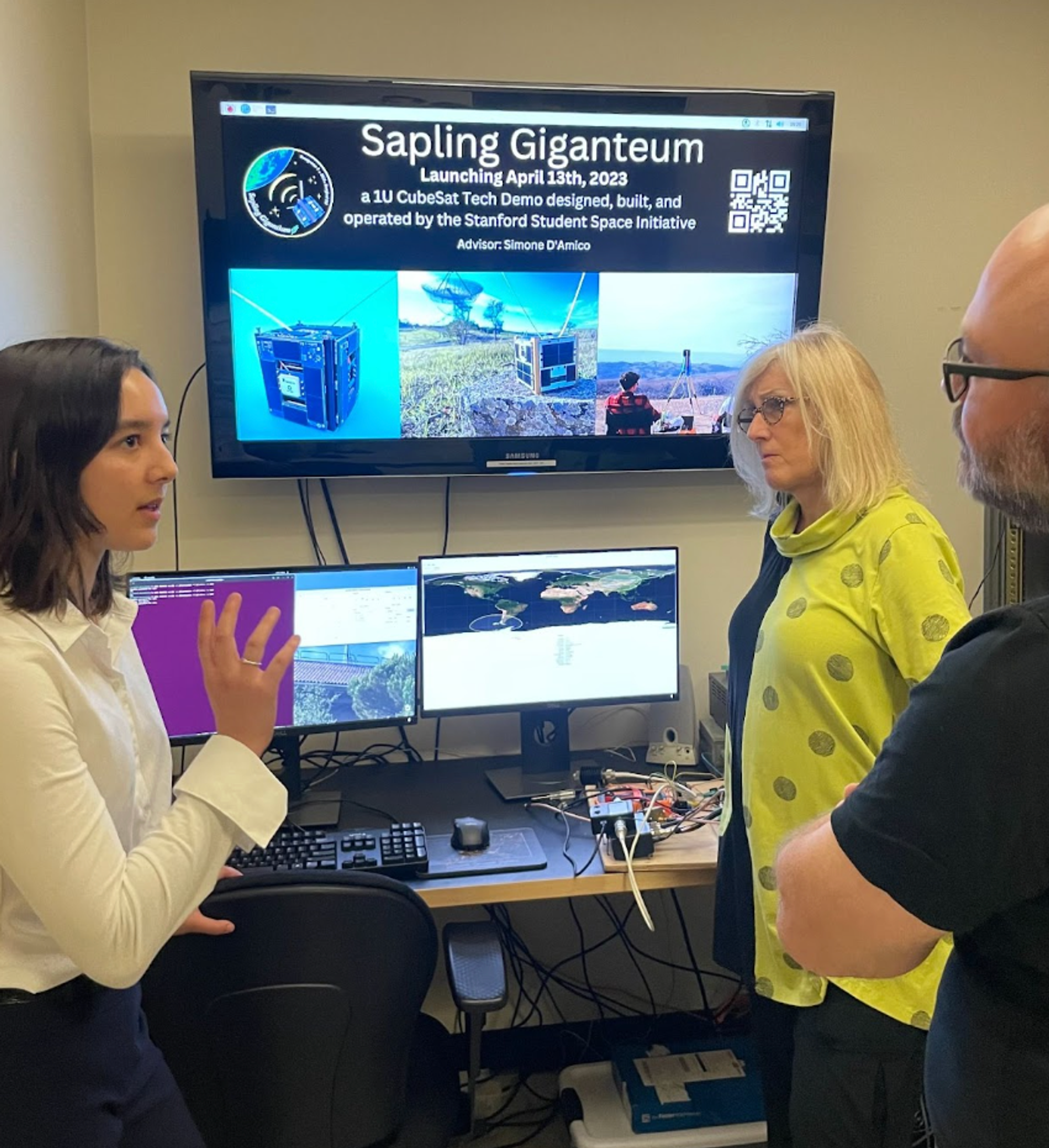
The event commenced at the Durand building on Stanford campus, where Satellites co-lead Ashley Raigosa demonstrated how an antenna on the building’s roof transmits and receives data from the student-built satellite when it passes overhead. Adding to the excitement, Raigosa highlighted that through TinyGS, a network of amateur radio operators, anyone can actively track the satellite from their own ground station or their home. This accessibility can extend to young students, who can easily acquire low-cost antennas and small boards to implement with TinyGS. Reflecting on the tour, Raigosa commented, “Explaining this to Paula and Philip was especially exciting since this can open the door to more students getting their hands on equipment that is actually communicating with space!”
A brief walk from the Durand building is the SSI workspace called End Station III, a 4-story deep underground facility which houses work sessions, team meetings, and project storage. This facility was the former end station of a particle accelerator from the nearby SLAC National Accelerator Laboratory, and is now considered home to many SSI members.
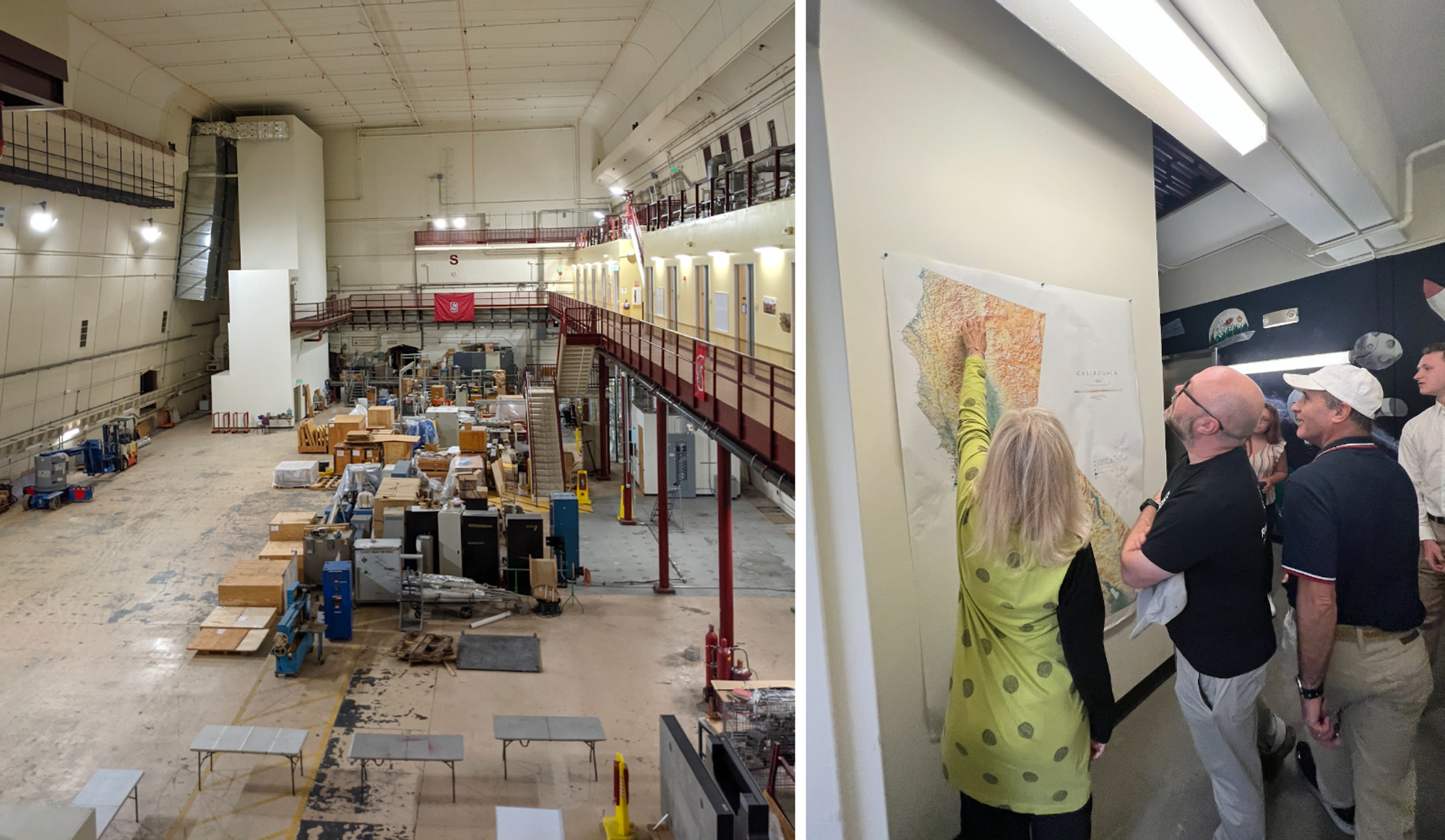
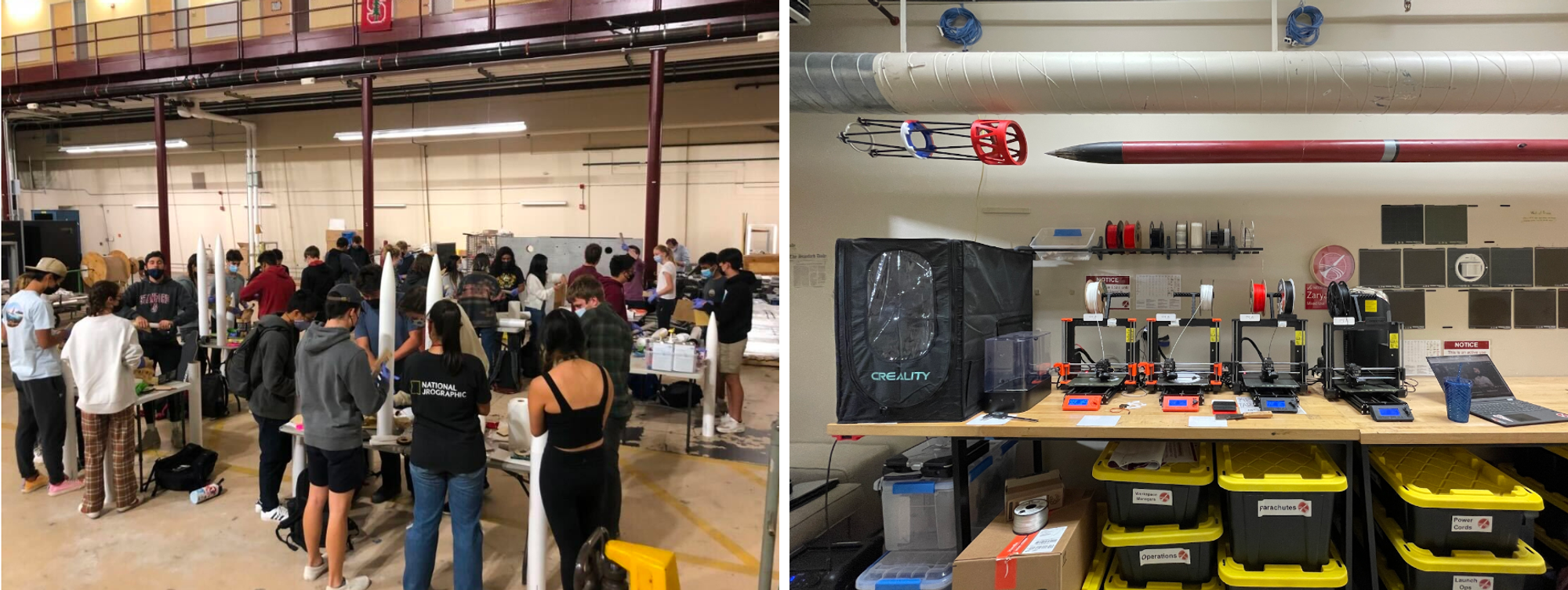
Along the walls of the SSI workspace are decades of launched rockets, symbolizing the remarkable ten-year journey of SSI, celebrated on its recent 10th anniversary event. Evelyn Nutt, the co-lead of SSI’s Rockets team, finds them to be a testament to the dedication in shaping team habits, knowledge, and culture. Today, SSI embodies this legacy by not only being guided to new heights through alumni, but also extending the spirit of mentorship to the generation of new Stanford students.
Reflecting on her experience joining SSI, Nutt recounts, “I found older SSI mentors on the Rockets team who shared their love for rockets with me and taught me all about high power rocketry. I felt a need to continue influencing young adults like me who want to dive into the engineering world for the first time and have fun doing it.”
Mentorship is a central value to SSI, even from the perspective of alumni such as SSI’s affiliate technical advisor Dr. Pete Mahowald, who agreed that “community and alumni involvement is a sign of the global significance of modern rockets and the satellites they launch. Yet SSI remains a student design produced by undergraduate agency, innovation and sometimes superhuman effort.”
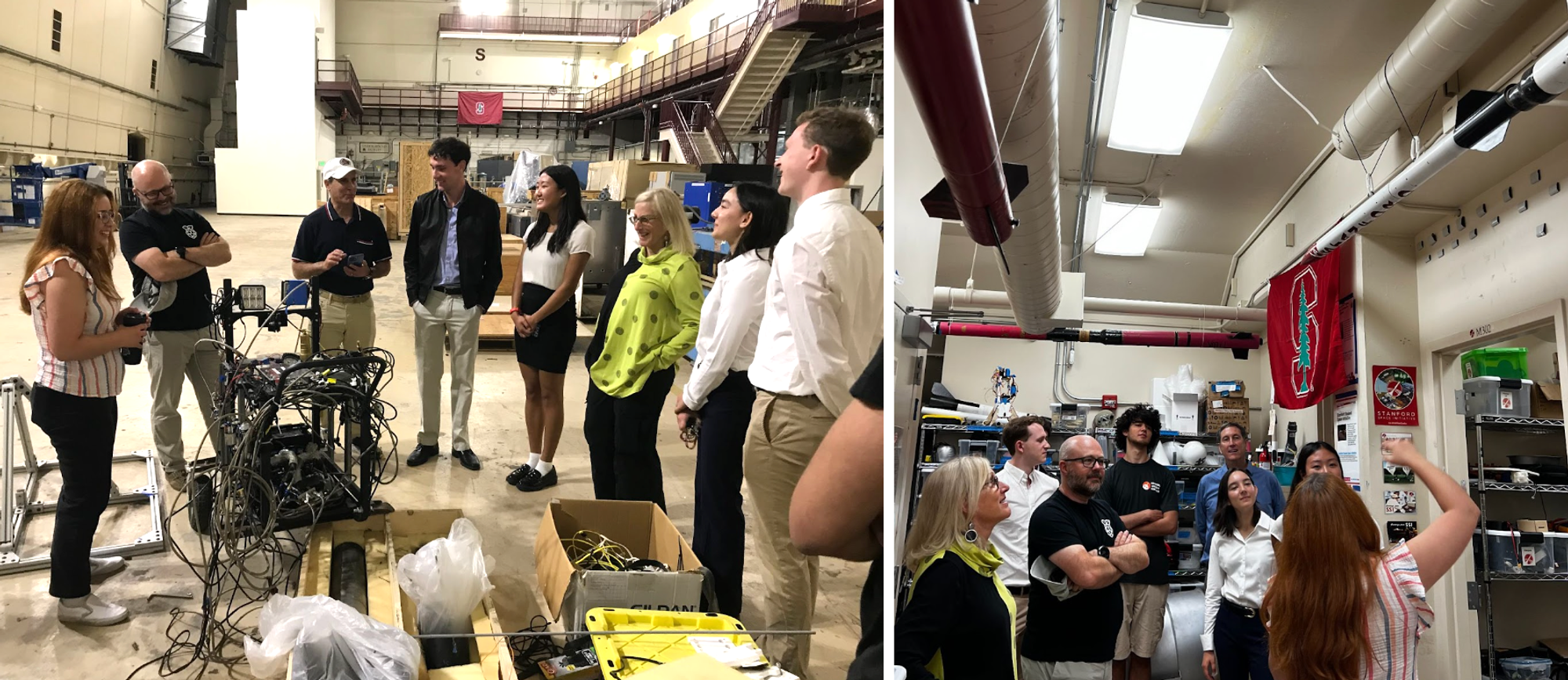
Visiting the satellites workspace also highlighted SSI’s journey toward more advanced and refined technology solutions, with its walls adorned with circuitry implemented on its previous satellites. Colligan and Golden experienced a firsthand glimpse of the cutting-edge projects, which highlighted a camera payload that can capture high quality images of the Earth and facilitate optical navigation.
“Achieving our imaging goals while keeping our CubeSat platform low cost and open-source posed a unique challenge,” Satellites co-lead Theo Makler commented. Thanks to the versatile and accessible camera options on the market, there is much promise for SSI to “make huge improvements in other areas of our future satellites, such as communications and data processing.”
The tools for building this satellite are also student-built, such as the pick-and-place machine (nicknamed the ‘PnP’), a device that automates the delicate process of placing minuscule components on satellite circuit boards.
Satellites payload lead Niklas Vainio emphasizes the PnP’s development as a model for increasingly accessible tools through online resources: “This advanced piece of equipment is typically only available for large electronics companies and well-funded labs, but we are now building one from an open-source kit. After many late-night coffee-fuelled work sessions, the machine is nearing completion, and we hope to assemble our first few boards with it this upcoming fall.”
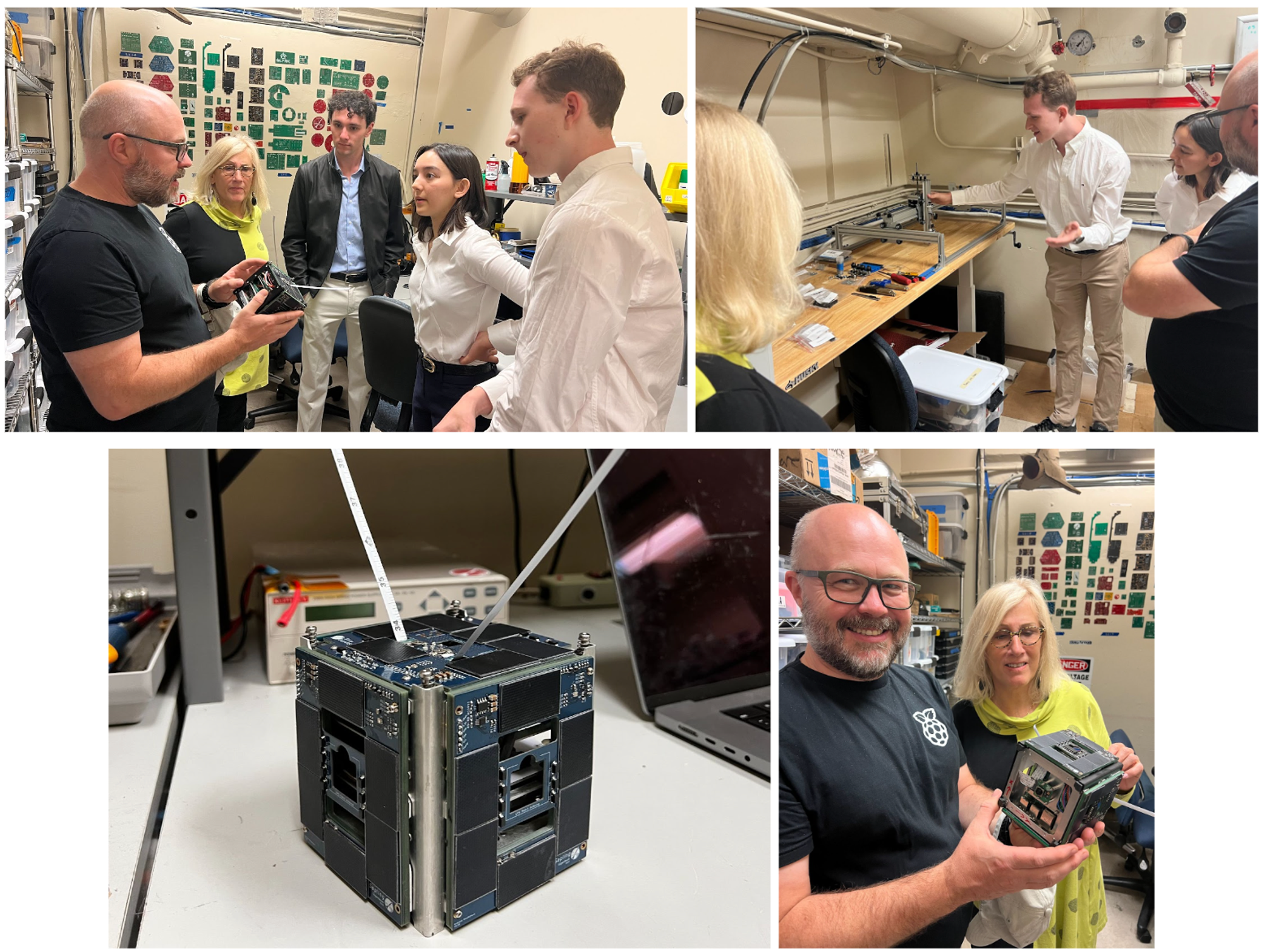
Following the tour, the group had lunch at the Stanford Alumni Club, fostering an atmosphere of open dialogue and invaluable insights. Conversation topics ranged from potential Mars helicopter missions to achieving a stronger space law framework. Looking back on the luncheon, SSI Public Relations manager Michelle Park remarked, “Alongside fellow students and visionary leaders with decades of expertise, it was exciting to envision infinite possibilities in the evolving world of space exploration and modern technology.”
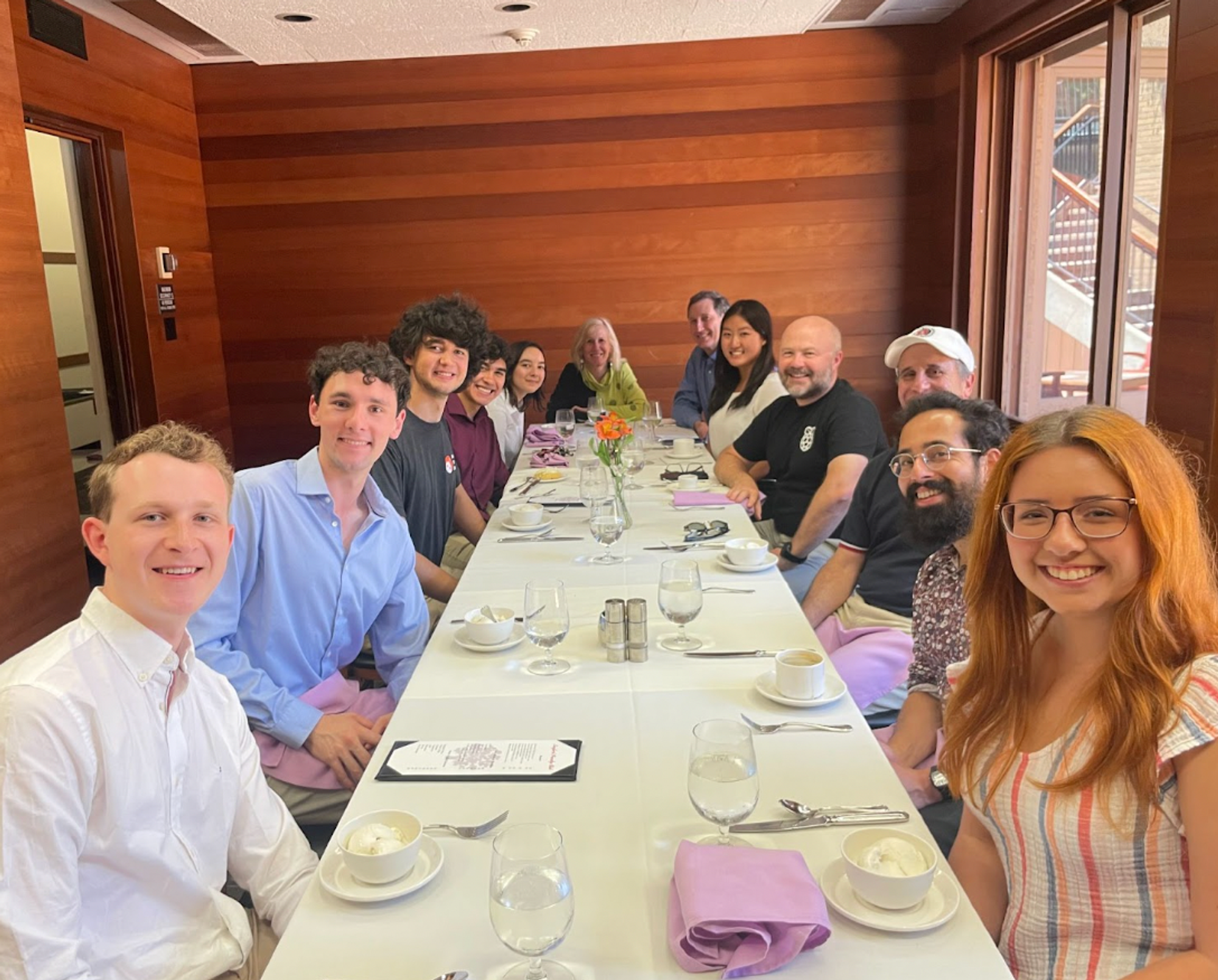
The group also delved into a more heavy topic: improving digital literacy and expanding access to resources for Title 1 schools. This subject resonated deeply with SSI, where we’ve been aiming to break these barriers by providing open source materials and employing low-cost, easily accessible equipment in our satellites. As Satellites Co-lead, Raigosa has developed STEM workshop content tailored for minorities and Title 1 schools, finding passion in teaching eager students. “Space is commonly considered out of reach due to educational boundaries or its costliness,” Raigosa laments, “as a result, I have always been excited to teach eager students about content that may have not appeared within reach at first.”
As the event came to a close, Vainio expressed that Colligan and Golden’s visit held a special significance since his own fascination with STEM began when coding his first Raspberry Pi at age 11. He remarked, “It was truly an honor to share my experiences with someone who had, indirectly, been such a huge inspiration to me.” After all, this event not only connected students with visionary leaders, but also underscored the tangible impact that accessible technology and education can have in shaping the next generation of innovators.